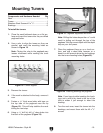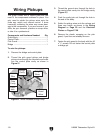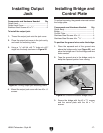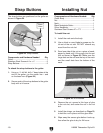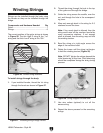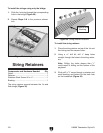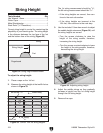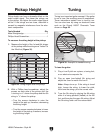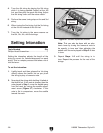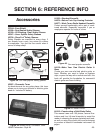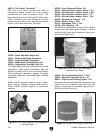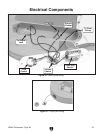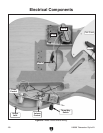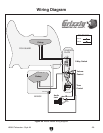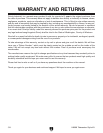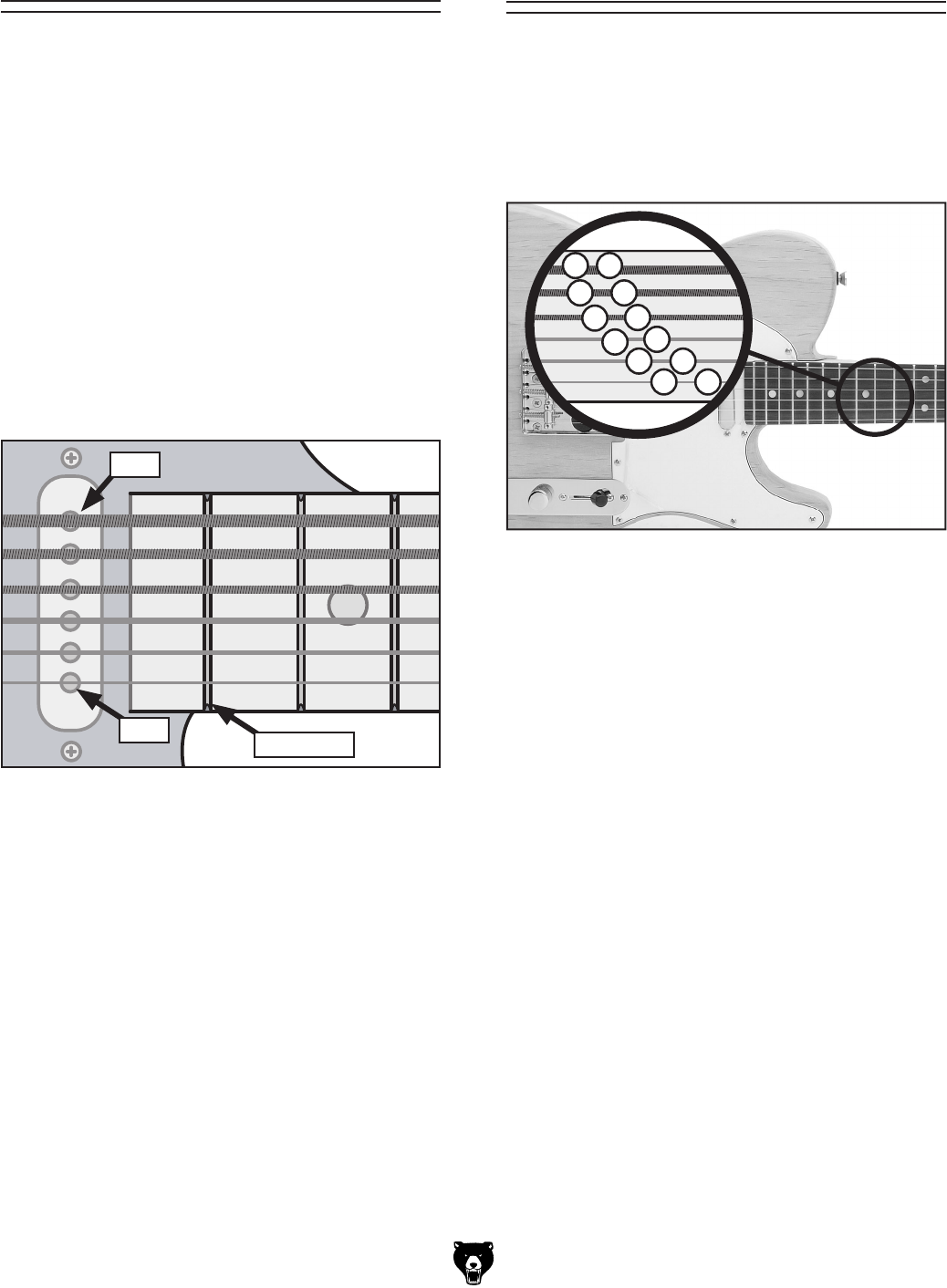
H8068 Telecaster
®
Style Kit
-23-
Pickup Height
Pickup height can have a dramatic effect on the
audio output signal. The closer the strings are
to the pickup, the higher the audio output signal
will be. If the strings are too close, distortion is
caused by magnetic interference from the elec
-
tronic components.
Tools Needed Qty
Metal Straightedge .............................................
1
Phillips Head Screwdriver ...................................
1
To measure the string height at the pickup:
1. Measure the height of the 1st and 6th strings
at the pickup while the strings are “fretted” at
the 22nd fret (
Figure 35).
Figure 35. String heights over the pickup.
22nd Fret
3
/32"
1
/8"
2. With a Phillips head screwdriver, adjust the
screws on each side of the pickup until the
1st string is
3
/32" above the pickup and the 6th
string is
1
/8" above the pickup.
—Turn the screws clockwise to raise the
height of the pick up, therefore, decreasing
the string height.
—Turn the screws counterclockwise to lower
the height of the pick up, therefore, increas
-
ing the string height.
Tuning
Tuning is an important guitar concept. If the guitar
is not in tune, the resulting sound is unpleasant.
These instructions explain how to tune by ear.
You can also tune by using an electronic tuner
such as the Grizzly H3097 Chromatic Tuner
shown on Page
25.
Figure 36. Example of standard tuning.
To tune the guitar:
1. Play a Low E pitch on a piano, a tuning fork,
or an electronic computer file.
2. Play an open (non-fretted) 6th string and
adjust the tuner to match the Low E.
Note: Always tune up. If the string is tuned
high, loosen the string to lower the pitch,
then tune the string up to the correct note.
3. Tune the 5th string by playing the 6th string
while it is being pressed (fretted) at the 5th
fret, and then play the open 5th string.
Adjust
the 5th string tuner until the notes match.



